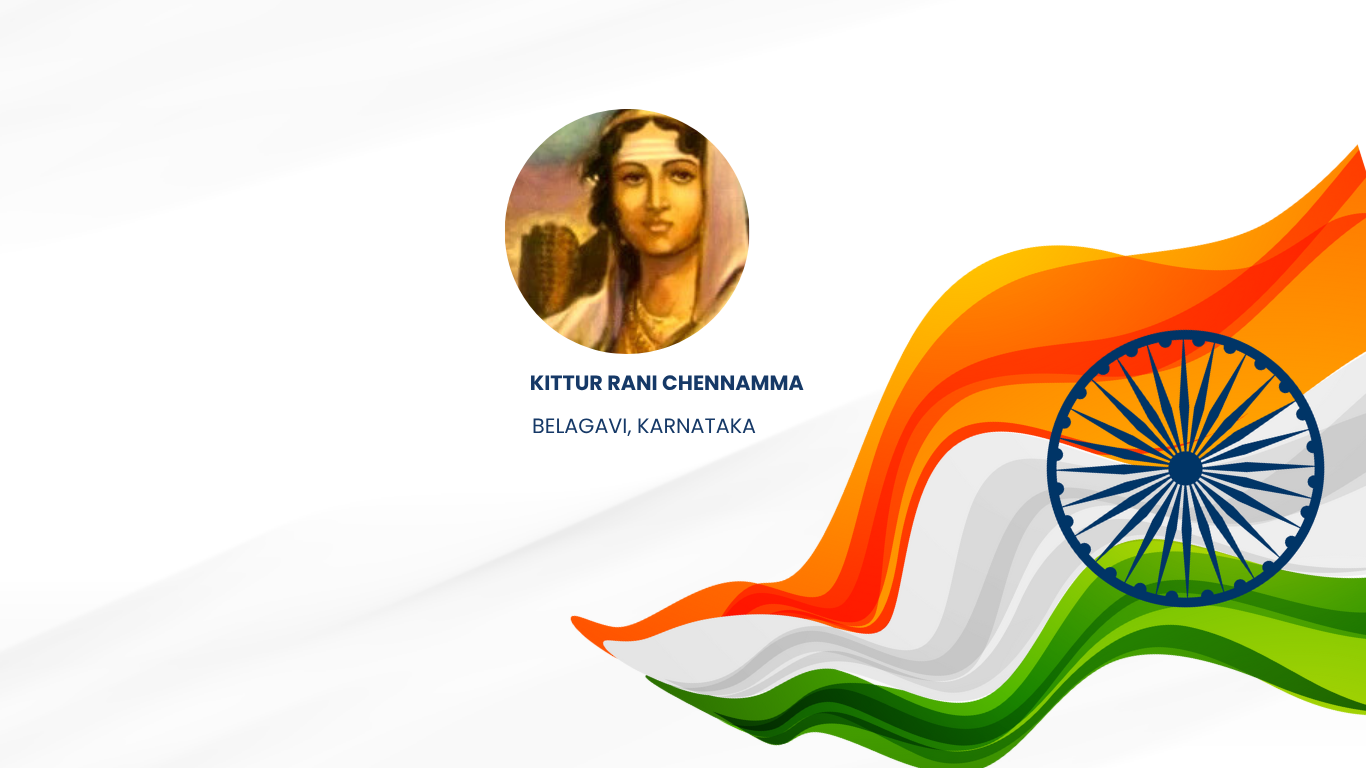When the First War of Independence of 1857 is discussed, we often hear about Rani Lakshmibai of Jhansi. But decades before her, another fearless queen had already stood up against the British Empire—Kittur Rani Chennamma, the warrior queen of Karnataka. Her defiance in 1824 made her one of the earliest female leaders to resist colonial rule in India.
Early Life and Rise to the Throne
Born in 1778 in the small village of Kakati, present-day Belagavi district of Karnataka, Chennamma was trained in horse riding, sword fighting, and archery from a young age. She married Raja Mallasarja of Kittur and became queen of the Kittur kingdom.
Fate struck hard when her husband died in 1816 and her only son passed away in 1824. With no direct heir, Chennamma adopted Shivalingappa to succeed the throne—a decision that would spark her historic confrontation with the British East India Company.
The Doctrine of Lapse Dispute
The British, under the pretext of the Doctrine of Lapse, refused to recognize the adoption and demanded control over Kittur. The Resident at Dharwad, St John Thackeray, attempted to annex the kingdom, leading to a fierce battle.
The Revolt of 1824
Refusing to surrender, Rani Chennamma gathered her forces and faced the British army. In the first clash, her troops managed to defeat the British and capture Thackeray. However, reinforcements soon arrived under Sir Thomas Munro. Despite her courageous resistance, the British overpowered Kittur, and Chennamma was eventually captured and imprisoned in Bailhongal Fort, where she died in 1829.
Legacy and Inspiration
Kittur Rani Chennamma’s defiance—more than three decades before 1857—proved that the spirit of resistance against colonial rule was already alive in India’s princely states. She became a symbol of valour, leadership, and patriotism, inspiring generations of freedom fighters.
Today, her memory is honoured through:
- Statues and memorials in Karnataka and across India.
- The Kittur Utsav, an annual celebration of her life and bravery.
- Her story being taught in schools as one of the earliest chapters of India’s fight for freedom.
Why She Matters Today
Kittur Rani Chennamma’s life reminds us that courage is not about the size of your army, but the strength of your will. She faced one of the world’s most powerful empires of her time, driven not by personal ambition, but by her duty to her people and kingdom.
Key Lessons from Kittur Rani Chennamma’s Life
- Leadership is about standing firm for what is right, even when odds are against you.
- History’s heroes are not always the most famous—many like Chennamma fought silently but with unmatched bravery.
- Resistance can inspire across centuries, keeping the flame of freedom alive.
#KitturRaniChennamma #FreedomStruggle #UnsungHeroes #IndianHistory #WomenInHistory #IndependenceMovement #KarnatakaHistory

